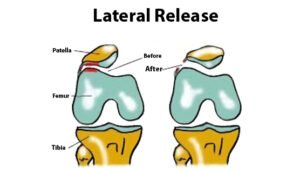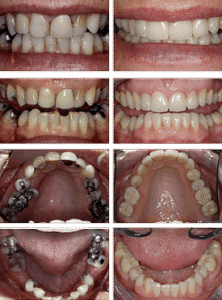Phleboliths_ Understanding Calcification in Veins and Pelvis
Understanding Phleboliths: Calcifications in Veins
Phleboliths, often referred to as “vein stones,” are small, calcified formations that develop within veins due to hardened blood clots. These calcifications commonly occur in areas with sluggish blood flow, such as the pelvic region, where minerals like calcium accumulate around old clots, forming rounded lumps. This article delves into the formation, appearance, diagnosis, and management of phleboliths, shedding light on when they might require attention.
What Are Phleboliths?
Phleboliths are tiny, spherical calcifications that form inside blood vessels, primarily in the veins. Composed of calcium deposits and fibrous tissue, they typically develop when old blood clots harden and mineralize. Increased abdominal pressure, often from straining during bowel or bladder activity, can contribute to clot formation, which may eventually transform into phleboliths. These formations are most prevalent in the pelvic veins but can appear elsewhere in the body.
How Do Phleboliths Form?
The formation of phleboliths is linked to areas of the body where blood flow is slow or stagnant, often due to limited muscle support around veins. This stasis encourages blood pooling, which can lead to clot formation. Over time, calcium salts, such as calcium carbonate or phosphate, coat these clots, creating phleboliths. They are frequently associated with conditions like varicose veins or hemangiomas (benign vascular tumors) and were first documented in the 1920s, with their study advancing alongside X-ray technology.
Common Locations of Phleboliths
Phleboliths can develop anywhere blood clots form, but they are most often found in regions with poor circulation or weak muscular support. The primary areas include:
- Pelvis: The most common site, particularly in pelvic veins.
- Uterus: Often linked to pelvic circulatory changes.
- Mouth and Cheeks: Associated with facial veins.
- Jaw and Parotid Glands: Found near salivary gland regions.
- Tongue: Less common but possible in vascular-rich areas.
In rare cases, phleboliths may also appear in the head or neck, depending on vascular conditions.
Diagnosing Phleboliths
Phleboliths are typically identified through imaging, with X-rays historically playing a key role in their detection. However, modern computed tomography (CT) scans are now preferred for their precision in distinguishing phleboliths from other calcifications, such as kidney or urinary stones. On imaging, phleboliths appear as small, round structures, measuring 3–7 millimeters, often with a distinct rim and a “comet tail” sign—a feature that sets them apart from other stones.
Phleboliths vs. Kidney Stones
Differentiating phleboliths from kidney or urinary stones can be challenging due to their similar appearance on imaging. Phleboliths are located within veins, while kidney stones reside in the urinary tract. Advanced imaging techniques, coupled with artificial intelligence and specialized software, enhance diagnostic accuracy by analyzing anatomical positioning and structural differences.
Symptoms of Phleboliths
Most individuals with phleboliths experience no symptoms and may remain unaware of their presence. When symptoms do occur, they are typically mild and may include:
- Pelvic discomfort or aching
- Flank pain (along the sides of the torso)
- Abdominal or lower back pain
These symptoms often arise if a phlebolith causes inflammation or irritation in the surrounding tissue or vessel.
Are Phleboliths a Cause for Concern?
Phleboliths are relatively common, affecting about 40% of adults, particularly those over 40. In most cases, they are harmless and discovered incidentally during imaging for unrelated conditions. Symptoms, when present, are generally mild and do not necessitate intervention. However, persistent or severe discomfort may warrant further evaluation.
Managing Phlebolith-Related Discomfort
For mild pain or swelling caused by phleboliths, conservative measures are often effective. These include:
- Warm Compresses: To reduce discomfort and promote circulation.
- Over-the-Counter Medications: Pain relievers or anti-inflammatory drugs can alleviate symptoms.
In rare cases, significant pain or inflammation may require surgical removal of the phlebolith. Typically, however, they are monitored over time without invasive treatment.
Conclusion
Phleboliths are small, calcified remnants of blood clots that commonly form in the pelvic veins but can also appear in the head, neck, or other vascular regions. While most people with phleboliths experience no symptoms, understanding their formation, diagnosis, and management is essential for addressing any associated discomfort. With advanced imaging and careful monitoring, phleboliths are generally a benign finding that rarely requires intervention.
💡 Frequently Asked Questions
Johnce / Getty Visuals
What Are Bladder Stones (Calculi)?
Answer coming soon. We are working on detailed responses to this common question.
What Are Kidney Stones?
Answer coming soon. We are working on detailed responses to this common question.
All those who do short article signs or symptoms that can be attributed towards phlebolith development demonstrate components which includes:
* Aching or agony within the pelvis
* Flank discomfort (upon the aspects of your overall body in between your ribs and hips)
* Stomach discomfort
* Low back again painPelvic Soreness inside Women of all ages and Adult males Are Phleboliths Anything at all in direction of Fret With regards to?
Answer coming soon. We are working on detailed responses to this common question.
⭐ Expert Tips
- Include seasonal or trendy variations to keep your meals exciting.
- Highlight prep shortcuts or time-saving techniques for busy cooks.
- Consider dietary restrictions and include substitution suggestions.
✅ Key Takeaways
- These dinner ideas are perfect for impressing guests or enjoying special occasions.
- Choose recipes that match your skill level and available kitchen tools.
- Presentation and taste both contribute to a memorable dining experience.
📣 Join Our Community
Want more inspiration like this? Subscribe to our newsletter for weekly dinner ideas and cooking tips!






